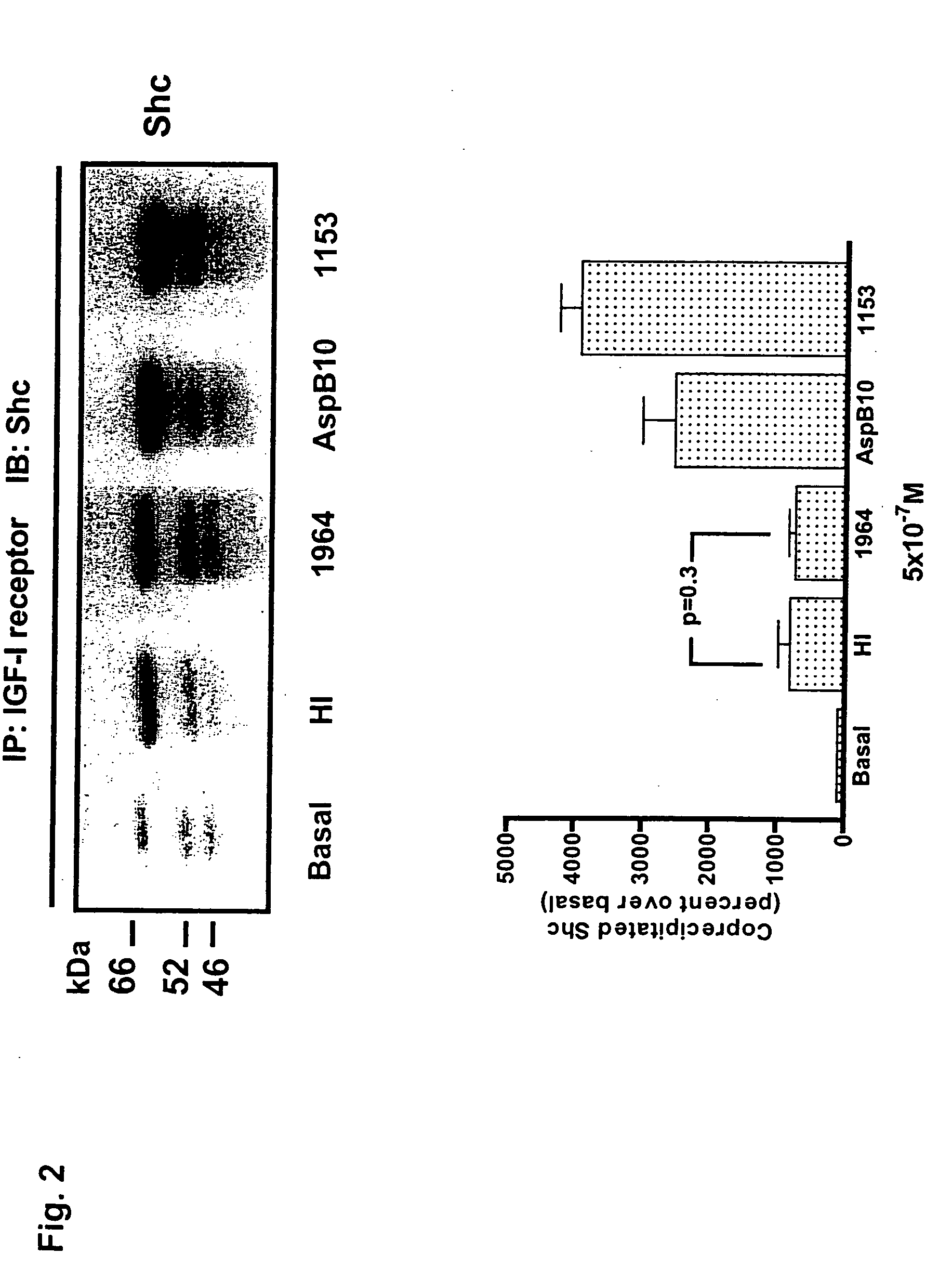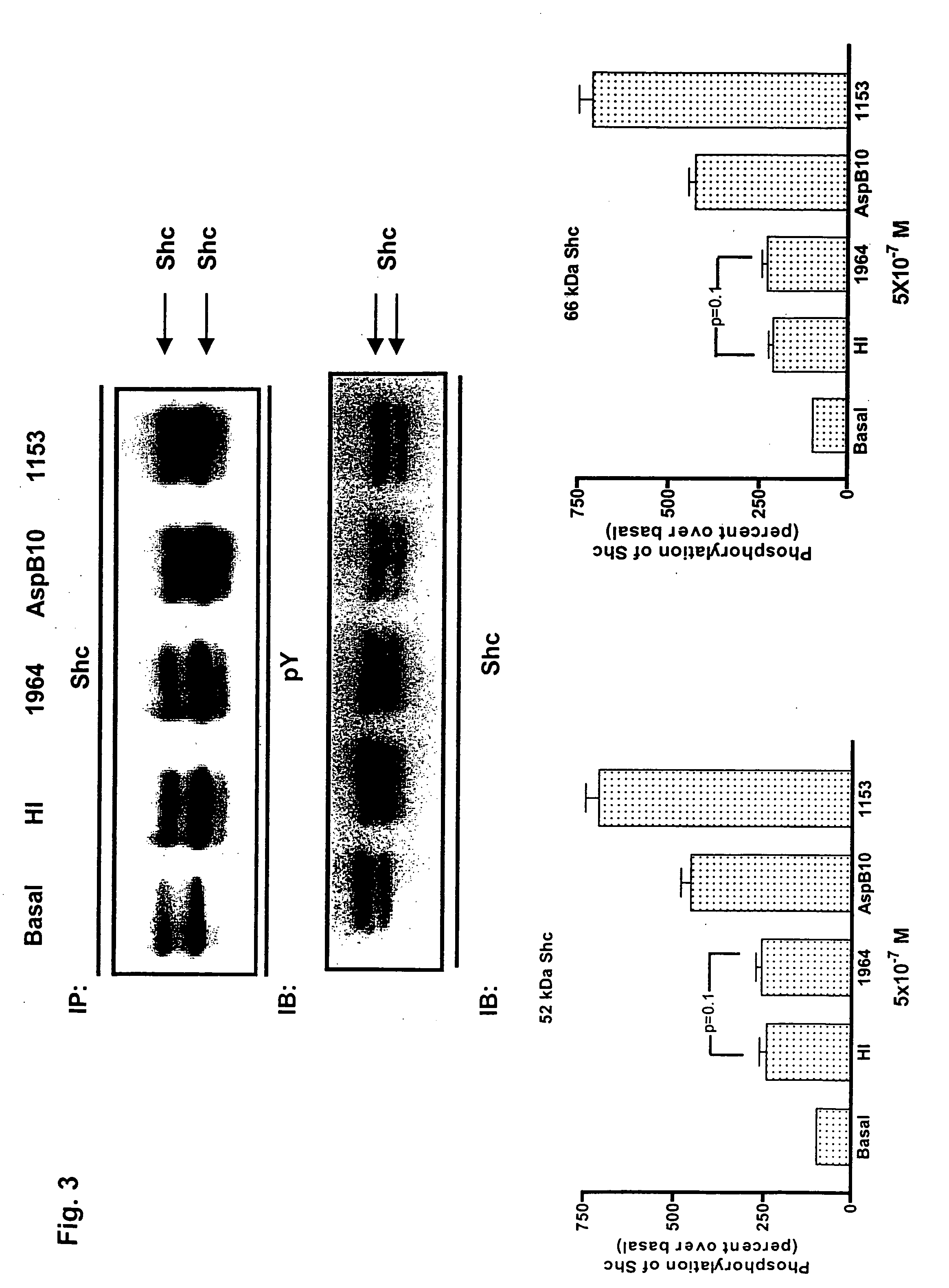Method of activating insulin receptor substrate-2 to stimulate insulin production
- Summary
- Abstract
- Description
- Claims
- Application Information
AI Technical Summary
Benefits of technology
Problems solved by technology
Method used
Image
Examples
Embodiment Construction
[0024] The potentially enhanced mitogenic activity of insulin analogs may affect the safety profile of the human hormone and requires a detailed analysis of any new analog considered for therapeutic applications. The signaling properties and the mitogenic potency of two novel rapid acting insulin analogs, LysB3, GluB29 insulin (HMR 1964) and LysB3, IleB28 insulin (HMR 1153) have been assessed in comparison to native human insulin and the analog AspB10 insulin using rat and human myoblasts and differentiated muscle cells. In K6 myoblasts expressing a high level of IGF-I receptors, both binding and internalization were 2-3 fold higher for AspB10 insulin and HMR 1153 when compared to HMR 1964 and regular insulin. This correlated with a prominent Shc / IGF-I receptor interaction, tyrosine phosphorylation of Shc, activation of ERK1 and ERK2, and stimulation of DNA synthesis by HMR 1153 and AspB10 insulin.
[0025] In contrast, HMR 1964 produced a marginal activation of the Shc / MAP kinase cas...
PUM
| Property | Measurement | Unit |
|---|---|---|
| Mass | aaaaa | aaaaa |
| Electrical resistance | aaaaa | aaaaa |
| Body weight | aaaaa | aaaaa |
Abstract
Description
Claims
Application Information
 Login to View More
Login to View More - R&D
- Intellectual Property
- Life Sciences
- Materials
- Tech Scout
- Unparalleled Data Quality
- Higher Quality Content
- 60% Fewer Hallucinations
Browse by: Latest US Patents, China's latest patents, Technical Efficacy Thesaurus, Application Domain, Technology Topic, Popular Technical Reports.
© 2025 PatSnap. All rights reserved.Legal|Privacy policy|Modern Slavery Act Transparency Statement|Sitemap|About US| Contact US: help@patsnap.com



